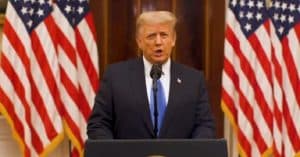Supreme Court's Impact on Potential Harris Presidency: Strategic Countermeasures Alleged
The U.S. Supreme Court has recently dramatically reshaped the landscape of administrative law, posing challenges for future administrations, according to some critics.
The high court's decisions could critically restrict the regulatory powers of a possible Kamala Harris presidency, as Slate suggests.
Shifts in Judicial Oversight and Agency Power
Recent rulings from the Supreme Court have weakened the authority of regulatory agencies like the EPA, Department of Labor, and SEC. This shift follows the court's decision to overturn decades of Chevron deference in the case of Loper Bright v. Raimondo, thereby granting judges greater leeway in statutory interpretation.
The consequences of these judicial changes are evident in cases like Garland v. Cargill, whereby a bump stock ban was invalidated due to a judicial interpretation of congressional authorization.
Moreover, the Major Questions Doctrine has been developed to impact major policies, such as student debt relief and measures for COVID-19 safety in workplaces.
Legal Risks and Agency Challenges
In another significant move, the case of Corner Post v. Federal Reserve altered the statute of limitations for challenging agency rules, which now permits old regulations to be reexamined in court. This development adds another layer of complexity to agency operations.
Further intensifying the scrutiny offered by some critics, Ohio v. EPA showcased an increased judicial review of agency decisions, with notable dissent from Justice Amy Coney Barrett highlighting the division within the court itself. The SEC v. Jarkesy decision also reinforced the need for the SEC to proceed through Article 3 courts to enforce civil penalties, marking a substantial departure from previous regulatory practices.
Implications for Democracy and Administrative Stability
These legal adjustments introduce significant instability into the administrative law framework, as argued by legal scholar Professor Steve Vladeck. He describes these actions as "deliberate destabilization," aimed at reducing the effectiveness of federal agencies.
"This instability is precisely the point. It creates uncertainty and risk that is designed to chill agency initiative and creativity -- and to concentrate arbitrary power in the hands of our least accountable and least democratic of policymakers: judges themselves," Vladeck states.
The court's approach, critics say, seems to align with economically dominant interests, favoring corporate and wealthy elite groups, and reflects a judicial preference that they think could pose challenges to regulatory fairness and equality.
Future Legal Challenges Under Harris Administration
Looking forward, the constitutional legitimacy of several agencies hangs in the balance, with upcoming court challenges that could nullify new policies under a Harris administration.
Some suggest that there is a discernible pattern in the court's rulings that favors executive power, especially when it aligns with conservative interests. This was previously observed in cases upholding the Trump administration's policies, such as the so-called Muslim travel ban and rulings on presidential immunity.
The dynamic between the Supreme Court and the executive branch, particularly under a potential Harris administration, could lead to significant policy blockades and shifts in the balance of power within the U.S. government.
Conclusion: Navigating a New Judicial Landscape
In summary, the U.S. Supreme Court's current trajectory in administrative law represents what critics suggest a strategic dismantling of democratic processes. These developments could severely limit the policy effectiveness of future administrations, including that of Kamala Harris, should she ascend to the presidency, according to those same critics.
Agencies now face heightened legal risks at all stages of rulemaking, which some believe could deter innovation and enforcement of necessary regulatory measures. The ongoing judicial reforms and their implications represent a critical area of focus for lawmakers and administrators alike, with some on the left urging a reevaluation of strategy in the face of an evolving legal landscape.




